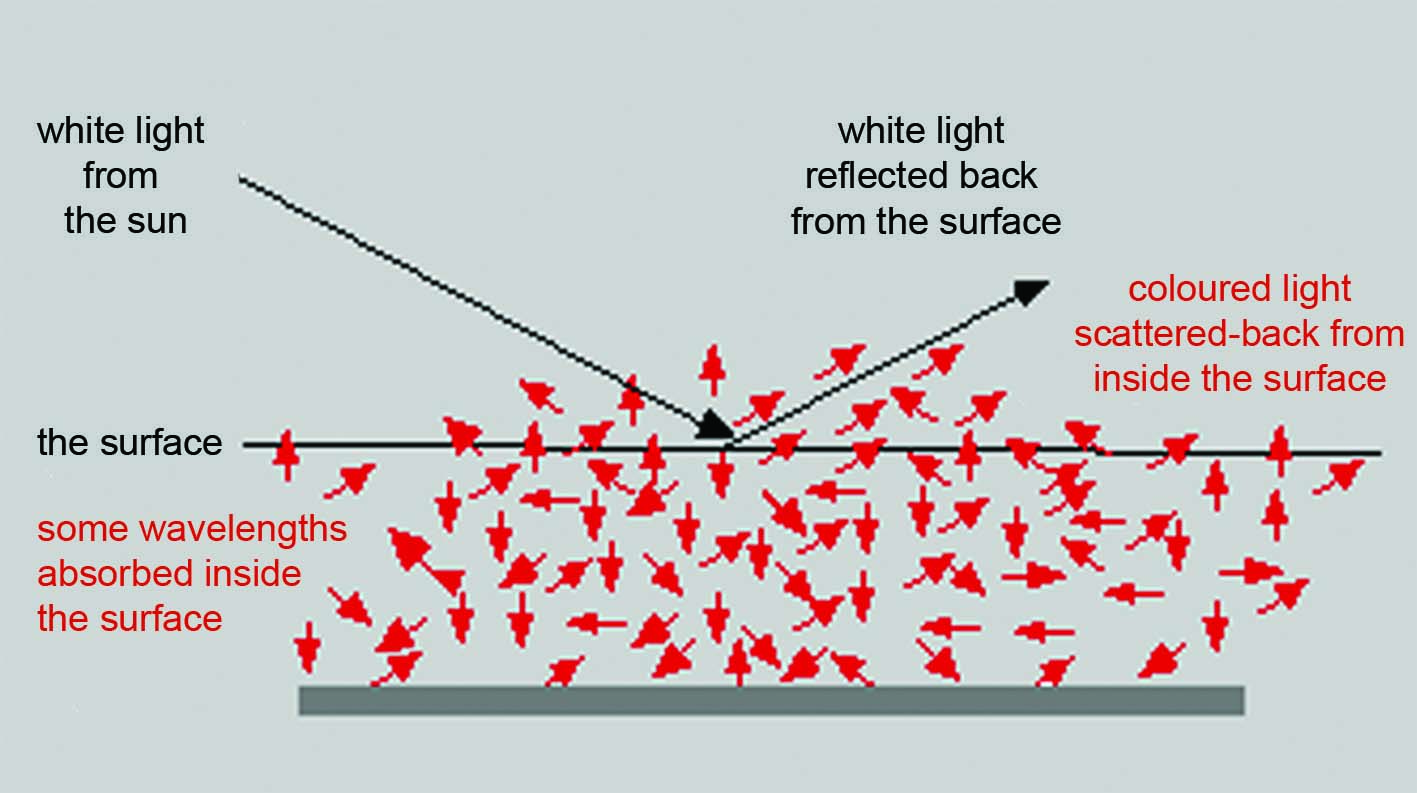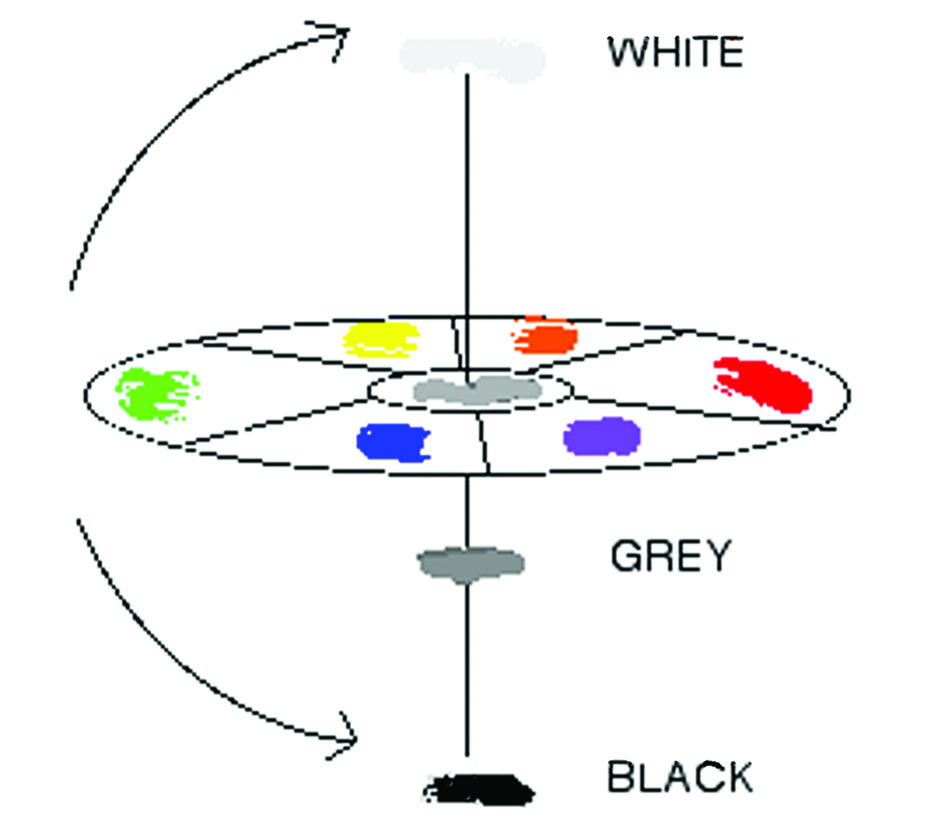Clarifications
Experience with new students suggest that there is a need for clarifications on the meanings of the word “colour” and a number of related words and phrases. The following excerpt from the Glossary to my books on drawing and painting provide answers to the questions listed below, and many others.
- What is meant by “body colour”?
- What is the difference between “brightness “ and “lightness”?
- What is meant by “reflected light”?
- How can colour be used to enhance perceptions of illusory pictorial space?
- Are “black” and “white” colours?
- Are cast shadows “black“?
What follows relates to several already published Posts. For example:
- What are colourists? (1): Some of the many meanings of the word
- What are colourists? (2): Difference between meaning of the word for Venetian Colourists and for Modernist Colourists?
- “Painting with Light and Colour”, Chapter 8 : Seurat and Painting with Light
- “Painting with Light and Colour”, Chapter 9 : Seeing Light
- “Painting with Light and Colour”, Chapter 10 : Illusory pictorial space and light
Colour 1: Colour and surface
In everyday language the word “colour” has four main meanings. The first three of these can be explained in terms of the interaction between surfaces and the light that strikes them as diagrammed in Figure 1.
.

.
- “Surface-reflection” : A part of the incident light is reflected directly back from the surface without changing its wavelength combinations. This is“surface-reflection” and is one of several sources of information that enables the eye/brain to create the experiences of surface-solidity, surface-form and in front/behind relationships.
- “Body-colour”: The remainder of the incident light enters surfaces and interacts with the pigments in them, such that some of its wavelengths are absorbed (i.e; turned in to non-visible electromagnetic energy) and the remainder is scattered about within the surface, before being scattered back out again into the eyes of the viewer. It is this scattered-back-out light that gives surfaces their “body-colour”, enabling us to see the surfaces as their characteristic colour (e.g. red, blue, brown, grey, skin colour, leaf colour, earth colour, sky colour, etc.).
- “Transmitted light”: In some cases, a surface can be viewed from the side opposite to the light source, in which case, it is said to be “translucent”. When this is the case, the light that enters a surface and interacts with the pigments in it is scattered out on the other side, into they eyes of a viewer. Accordingly it is described as “transmitted light”. It is this that that gives us the colours of stain-glass windows and translucent leaves when seen against sunlight. In the virtual absence of surface-indicating reflected-light, we perceive such colours as both surfaceless and formless. Two other examples of familiar, perceptually surfaceless colours are the blue of the sky and the colours of the rainbow.
The fourth meaning is more prosaic:
- Paint or pigment colour: The word “colour” is also used to describe any selection from the gamut of paints, pastels or crayons used by artists to give colour to their paintings. Thus we talk about the “colours” contained in our paint box, or of the “lemon yellow” and “cobalt blue” tubes of paint to be found in it.
Colour 2: Colour, light and physics
While in everyday language “colours” are referred to with words like “red”, “blue”, “yellow”, “pink”, “brown”, “grey”, etc., and we are all familiar with what they mean, physicists have preferred to describe them in terms of electromagnetic energy and combinations wavelengths and levels of intensity. Accordingly, they are likely to describe the three cone-receptor types in the retina at the back of the eyes as being relatively sensitive to “short”, “medium” and “long” wavelengths. However, even physicists can lapse into referring to them, more colloquially, as “blue”, “green” and “red”, a slippage which can lead to significant misunderstanding. If we wish to understand the nature of colour vision, it is important to realise that knowing the wavelength of the light coming into the eyes from a surface is by no means the same as knowing its colour. Light has no colour: Colour is a creation of eye/brain systems gathering and comparing information from arrays of inputs (as explained elsewhere in these Posts, as well as in the chapters of my books).
One consequence of this fundamental truth is that, although there is indeed a correspondence between wavelength profiles and the colour perceptions that they stimulate, this is not as simple as many people seem to believe. It is only occurs if all the wavelength profiles entering the eyes from all parts of the scene being analysed during the colour-creating process are taken into account. Likewise, our experience of colour in paintings does not depend simply on the absorption/reflection properties of individual regions of pigment colour but rather on the absorption/reflection properties of all the regions of pigment colour on the entire picture surface. In other words, they depend on “whole-field-colour-relations”.

.
Colour 3:
As with all words with a long history, the word “colour” has evolved in terms of its meanings and it is therefore it is important to be careful when using it. Most commonly it is used to describe visual sensations that are experienced as attributes of surfaces or regions of surfaces in the external word. We talk of “red” roses or “green” grass because we have learnt to use these words to describe our experience of “red” and “green” objects that we come across in daily life. However, in the eighteenth century, scientists of visual perception realised that colour is not anything of the kind. Rather it is a creation of eye/brain systems based not only on information coming into the eyes from the surface that is being perceived as coloured, but also from the surfaces that surround it. In short, they realised that the experience of colour is both brain-made and context-sensitive. Together these two insights made it clear that the colour of a surface cannot be equated with wavelength combinations of the light reflecting from it, as physicists had been doing. For more on this see the section on colour constancy under the constancies in this Glossary.
Soon after the physicists made new contributions to the progress of understanding about colour by going deeper into the subject of the information that the eye/brain picks up from surfaces. What they found was that it is made up of two components with very different properties. In this series of books these are called “body-colour” and “surface-reflection”. Figure 1 shows that when daylight, containing all the visible wavelengths strikes a surface it is divided into two parts:
- One part penetrates the surface. When inside, some of its wavelengths are absorbed and others, having been scattered around inside, are scattered back out again into the eye of an observer. This is the “body colour” (what we see as the green of leaves, the yellow of ripe corn, the flesh colour of flesh, etc.). As far as I know, nobody has estimated the number of different body colours in the visible world, but there are clearly at least many thousands.
- Another part never enters the surface. Rather it is reflected directly off it according to the rule the angle of incidence is equal to the angle of reflection. Since no light is absorbed during this process, the incident light and the reflected-light contain the same wavelength combination. In the diagram both are shown as being the same “white” light.
In the interests of simplifying its message, Figure 1 only shows one ray of incident light. In the real world light arrives at surfaces from a combination of primary light sources (coming from one or more different directions) and a multiplicity of secondary light sources of different of intensities (coming from a multiplicity of different directions). While primary light sources can have fairly predicable wavelength/intensity profiles, secondary light sources never do: The likelihood of any two combinations of them being the same is negligible. The resulting complexity is such that no part of any one surface reflects the same wavelength/intensity combination as any other part of it. Likewise, no two surfaces in any scene reflects the same wavelength/intensity combination. Physicists would describe the consequent variety of in the composition of the reflected-light that results as “infinite”. However, for the perceptual scientist, the limitations on the sensitivity of their visual systems restrict the number of nuances of which human eyes can be aware. How many is disputed, but it is generally agreed to be in the millions.
Colour 4 : black and white are colours
In the 1980s Semir Zeki, when investigating area V4 of the visual cortex, found twenty-two “colour coded cells”. These respond to body-colour independently of their wavelength profiles. The twenty-two not only included “violet”, a colour that has no simple wavelength equivalent, but also “black” and “white”. This means that the eye/brain responds to achromatic regions of surfaces in precisely the same way as it responds to regions of blue, green yellow, orange and red. This definitively resolved the question as to whether black and white are colours.
Although Zeki’s dicoveries provided incontrovertical proof that colour is made in the head, this conclusionhad been reached and generally accepted by scientists of visual perception well over 150 years earlier when they were trying to make sense of the phenemenon of colour-constancy.
Colour 5: Shadows
More recently, the discoveries of the physicists have been combined with the ideas of the perceptual scientists to explain how the eye/brain is able to separate surface-reflection from body-colour. Details of how this is done are given in “What Scientists can Learn from Artists”, Chapters 13 and 14. However one part of the computation depends on the sudden changes in the profile of the reflected-light that regularly occur at the edges of regions of colour (whether at edges of regions of different pigmentation within the same surface or at edges of the surfaces themselves) being equated with changes in body-colour. However it turns out that the computations concerned cannot distinguish sudden changes in actual body-colour from those that occur at the edges of cast shadows (due to sudden changes in intensity relative to adjacent illuminated regions of surface). Accordingly our eye-brain systems classify these erroneously as “body-colour”. Accordingly, as far as the eye/brain is concerned the colour of shadow is just as much a colour in its own right as the blue of the sky, the red of a tomato, the yellow of a lemon, the green of a leaf, the white of snow or the black of soot.
.
Francis,
This Post is invaluable. It’s great, and beautifully laid out. Thank you. Sylvia
A splendid analysis, thank you Francis, even a colour blind painter [me] can follow it!